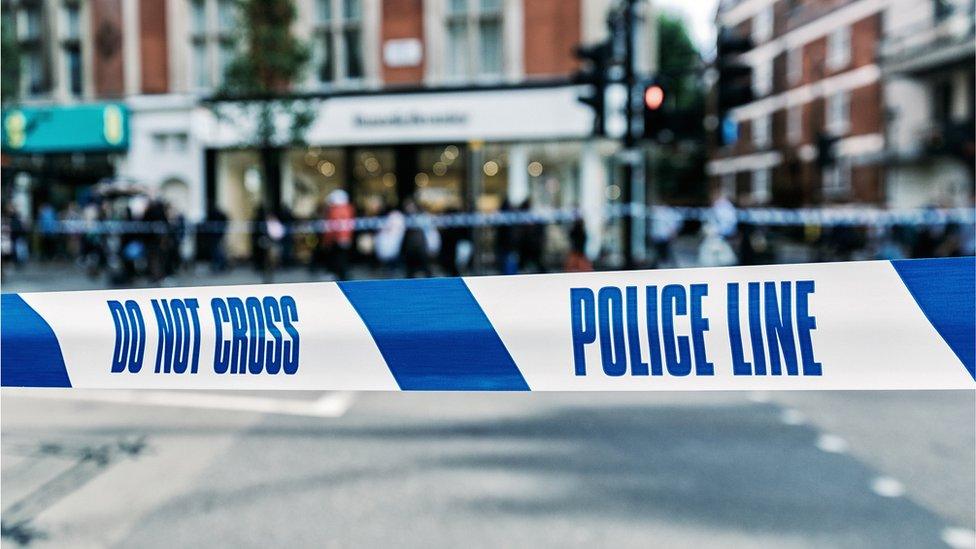Fewer crimes ending with charges - check your police area
- Published
- comments
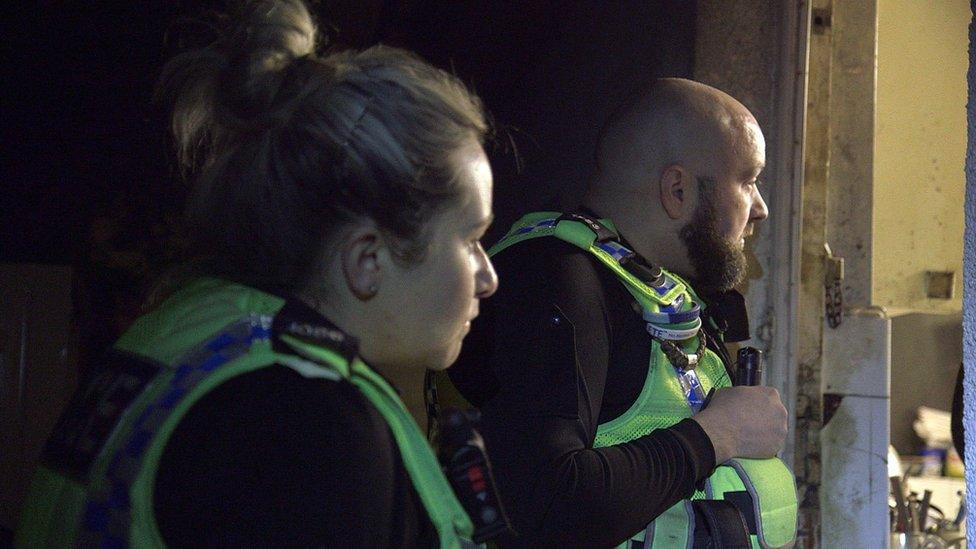
The reduction in charges follow a period of cuts for the police
The number of criminal charges being brought in England and Wales has been falling - despite more crimes being recorded in the same period.
BBC analysis of Home Office data for Panorama shows 527,000 charges were brought in 2016-17 - a fall of 65,000 on 2014-15. Meanwhile, the number of crimes recorded rose by nearly 750,000.
Police say a squeeze on resources is making crime harder to investigate.
The Home Office says it is working with police to find a solution.
Check your area
If the police force lookup does not load click here, external.
The picture in Northern Ireland and Scotland is different. Charges have fallen at the same rate as recorded crime in Northern Ireland. In Scotland where the criminal justice system is different, they record clear-ups, a broader category than charges - these have fallen in line with recorded crime.

West Yorkshire Police Chief Constable Dee Collins says things are stretched.
"My officers and staff, I think do a fantastic job with the resource that we have, but I realise that we are letting some people down," she said.
"Since 2010 we've had a 35% real-term cut and what that has meant in terms of officers and staff numbers is I have 1,400 fewer people."
Fewer charges means victims such as Richard Bolland are not getting justice. Last year he was attacked in the fish and chip shop he runs in Wyke, near Bradford.
He was so severely beaten he passed out and says the attack left him looking "like Frankenstein". Then he was robbed. "He took my wallets, the company money, the money to pay the suppliers, the till float, he took everything," Mr Bolland said.

Richard Bolland was beaten about the head
He says the initial response from the police was good, but he feels let down by CID.
No-one was ever caught and he was told by the police that if he could come up with a lead to help them, then he should let them know. "Other than that it was on the shelf. And since then I've not heard a single thing from them."
West Yorkshire Police say that despite receiving tip-offs about who attacked Mr Bolland they could not gather enough evidence to bring them in. They say they have reviewed the case and believe they responded in the right way.
"I think there is an emerging crisis and it's a crisis that's right at the heart of policing, the investigation of crime," says Peter Neyroud, a former chief constable. He describes the fall in charges as significant and depressing.
Home Office minister Victoria Atkins says the government is looking at this problem "very carefully" to see whether there is a problem at force level or if there is something it can do nationally.
"We want to ensure that when a victim reports a crime to the police that it's investigated properly and thoroughly and that any charges that are appropriate are made," she said.


Is crime actually rising?
The number of crimes recorded by police in England and Wales has risen by nearly 750,000 in the last three years. Some of this rise is because police are recording crime better.
In early 2014 an investigation by the House of Commons Public Administration Select Committee found that forces had been under-recording crime. As a result data audits are being carried out on each force by the Her Majesty's Inspectorate of Constabulary.
But some crimes are genuinely up. If you look at the more accurate Crime Survey for England and Wales, offences such as burglary, robbery and some violent crimes are rising.
Either way the police have more cases to investigate than they did in 2014.

The reduction in charges follow a period of cuts for the police. There are about 20,000 fewer police officers in England and Wales than there were in 2010. "That's four and a half million policing days of investigation," said Mr Neyroud.
He says there is also an increased demand for the police service to investigate more rapes, modern slavery, terrorism and organised crime.
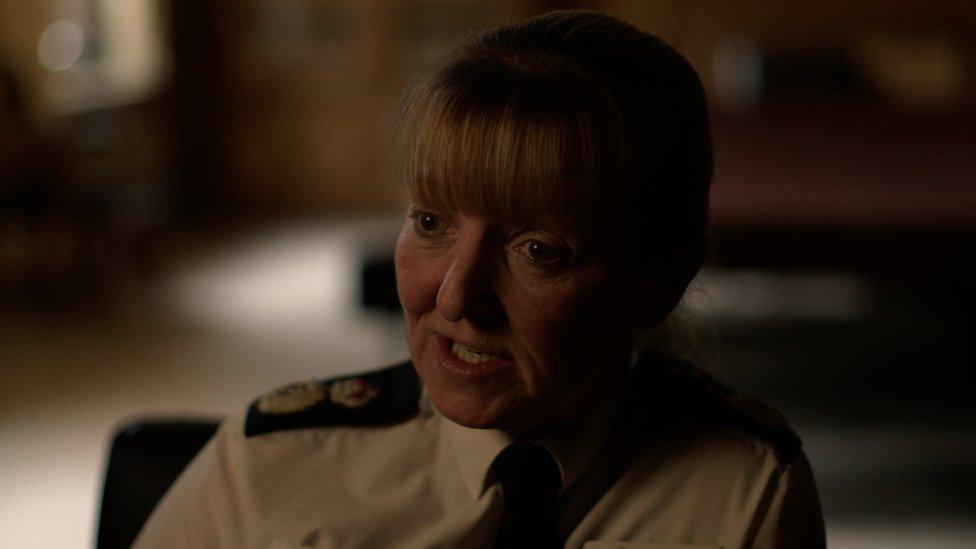
Forces are having to make tough choices, Dee Collins says
"That's shifting all the experienced resources into those areas and leaving a considerable drop in the expertise in dealing with the basic day-to-day crimes which are the ones that most of the public are concerned about."
He believes this is leading to police screening crimes for those they feel they can investigate successfully and those they can't.
Thinning blue line
In West Yorkshire, Ms Collins admits they are having to make pragmatic decisions about which crimes to follow up.
"For example if it was an elderly victim and something that might feel fairly low-level we will probably still attend. If perhaps it had been myself ringing about a particular issue we might not. "
It has certainly shaken Mr Bolland's faith in the abilities of the police. "The thin blue line, it's a dotted line now and the dots are getting further and further apart," he says.
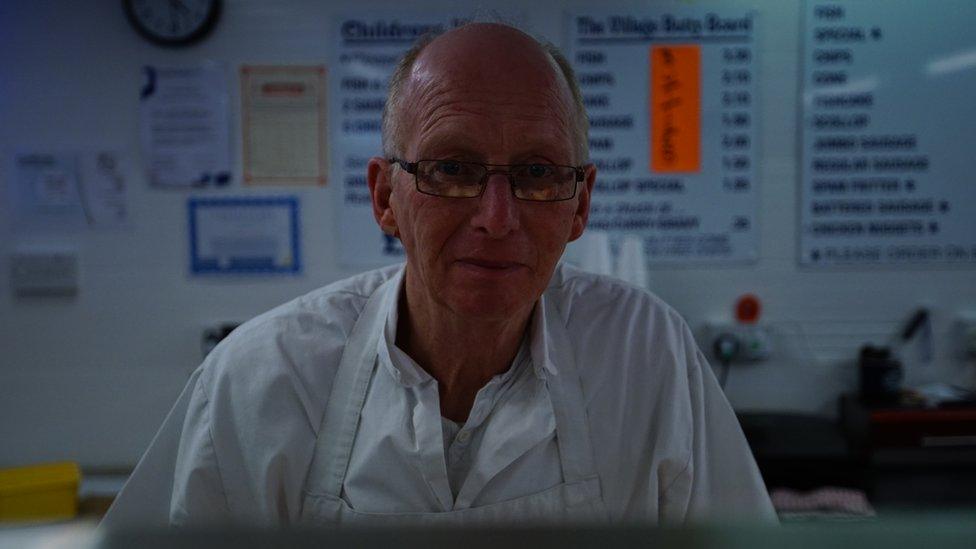
Richard Bolland back in his chip shop
Tight resources and rising crime have brought back bad memories for Mr Neyroud from his time in the police.
"We spent more of our time apologising for what we weren't able to do than doing what we were able.
"The police service appears to me to be in that position again."

Data Analysis by Wesley Stephenson, Ransome Mpini, and William Dahlgreen. Design and development by Sumi Senthinathan, Steven Connor, and Becky Rush.
Methodology:
1. England and Wales
We have looked at the outcomes data and recorded crime data for the three years between 2014-15 and 2016-17. 2016-17 is the latest full year for which we have data.
Method for calculating change in recorded crime and charges:
For charges we have used: 'Outcomes open data year ending March' for 2014-15, 2015-16, 2016-17 taking the data for charges recorded in each particular year.
For recorded crime we have used: 'Police recorded crime open data Police Force Area tables from year ending March 2013 onwards'
We calculated percentage change using the data for the first and last years in our time period.
In the crime categories chart we have removed any category with fewer than 50 charges in the base year of 2014-15. This is consistent with methodology used by the Office for National Statistics.
2. Northern Ireland
For the PSNI we only have two years of data 2015-16 and 2016-17.
PSNI use the same crime categories and recording methods as England and Wales. To calculate the PSNI percentage change we have used the data for the first and last years in our time period.
3. Scotland
Police Scotland has different crime categories to England and Wales and it also uses the broader category of 'clear ups' rather than charges. The data we use for Scotland is as follows:
Scotland (data coverage dates 2015-16 to 2016-17)
4. Chart 1: Recorded crime is up but charges are down.
For the years between 2007-8 and 2016-17 we have used the same data as above plus: 'Police recorded crime open data Police Force Area tables from March 2008 to March 2012'. To calculate change we have excluded fraud offences and then calculated the year- on-year change in total recorded crime and the year on year change in total charges for England and Wales. This chart was produced with help from Marian Fitzgerald - Visiting Professor of Criminology, University of Kent.
- Published26 April 2018
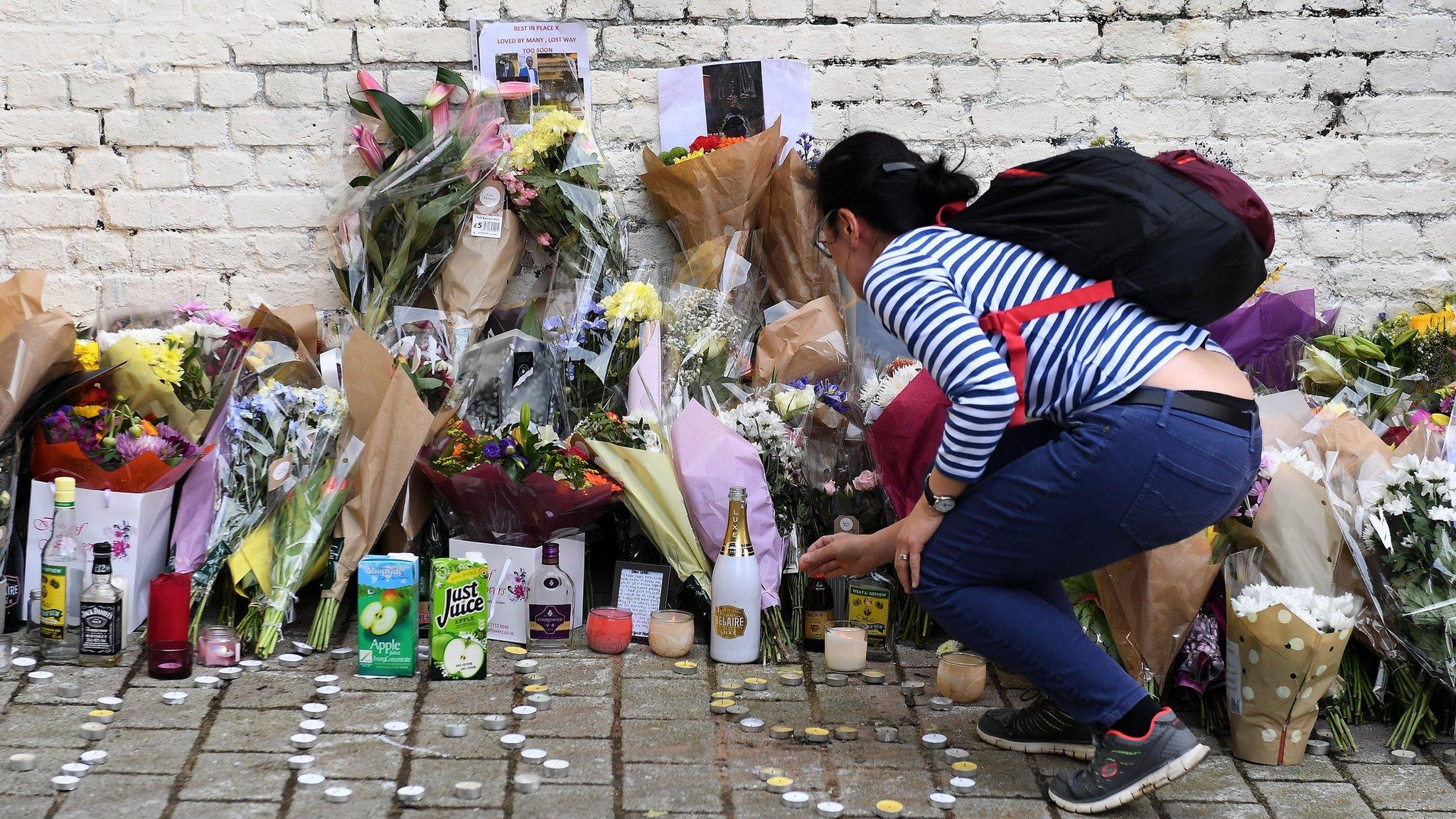
- Published11 April 2018

- Published24 January 2019

- Published25 January 2018
